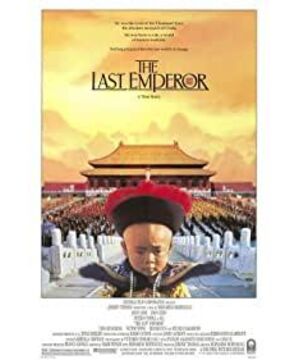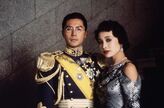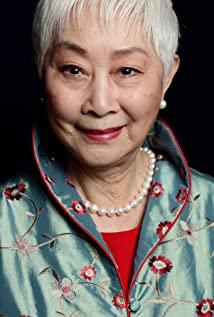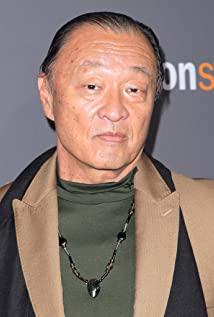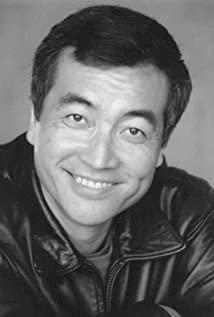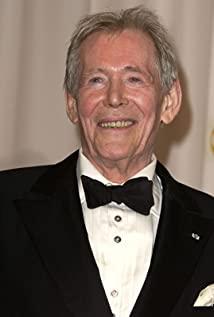1. Color and narrative structure
"The Last Emperor" adopts a nested double-space-time structure. The main clue is Puyi's memory of time and space. Realistic time and space are interlaced and structured together in Puyi's life in different eras. For the treatment of the dual-space-time structure, the two time-spaces are generally given different colors to see the difference. The choice of colors depends on the special signs of the film's era background or the director's subjective emotional intentions of the narrative era. Usually we see that the film may use a single tone to express history and use real colors in real time and space. For example, in "Schindler's List", black is used to express history (but this is mainly related to the director's intention to highlight the darkness of that short history), and yellow (fading of objects stored for a long time) is commonly used. The advantage is that the time and space jump is clear. The history of yellow and black performance is related to the audience's appreciation habits.
The application of color in "The Last Emperor" is given a symbolic meaning. It firstly expresses the intent of photography and secondly assumes the expressive function of reality. Straro set the overall tone of real time and space to green. Green has a consistent meaning in Straro's films, which is vitality. Setting the real time and space to be green not only shows the powerful vitality of New China after liberation, but also shows that Puyi has regained a new life in the transformation of New China. This kind of green setting is not entirely hypothetical, but also has a certain realistic basis, such as the color tone of the People's Liberation Army clothing at that time. The time when Puyi was escorted to the detention center was winter, and the location was northeast. The color in reality should be gray-blue, with blue as the main color. However, Straro abandoned the realistic blue tone and adopted the green tone, because the green symbolism also mainly implies peace and kindness. These two meanings are extremely important and consistent with the theme of the film. The reality of time and space is China after liberation, and it is peaceful. In addition, for prisoners of war, the CCP’s policy is lenient and benevolent.
For the historical time and space that Pu Yi recalled, Straro used a warmer red as the main color, and also used a slightly lighter yellow tone. "Sunset Red" is a symbol of the historical era of Puyi's life. In the passage of Puyi's entry into the palace to inherit Datong, this color tone has always existed, and it always gives people a sense of the end of the era and the decline of the empire. When Puyi played in the palace and Johnston appeared in his childhood, the "sunset red" began to recede, and the gentle and elegant beige began to appear.
When Puyi began to take refuge in the Japanese in the Tianjin concession, Straro began to use it. A deep, cold blue hue. The blue hue has the meaning of loneliness and disappointment, implying that Puyi's attempts to rely on the power of the Japanese to restore the kingship will eventually disappoint him, and it was later proved that Puyi was completely trapped in the Japanese imprisonment and use. . The window of Puyi's residence was completely covered by blue, only the lamp that symbolized Puyi's puppet imperial power was lit lonely, and Puyi's situation was clear at a glance. Blue is also a symbol of the power of the Japanese military. Japan is an island country. Blue is the color of the sea. At the same time, it has a cruel and cruel connotation. In the scene of Dongfangzhu tempting Wanrong to take drugs, this symbolic meaning is undoubtedly manifested. The blue of the Japanese military power is shrouded in Dongfangzhu. This blue color began to induce Wanrong to the abyss of degeneration.
Since different scenes have different main colors, if they are directly connected, it will inevitably give people a sense of abruptness. At this time, Straro's brilliance is shown. When connecting the two scenes of Puyi’s suicide and Puyi’s entering the palace, the blood from Puyi’s suicide was used as the basis for the transition. The bright red blood slowly spreads to the entire picture. The color of the blood here is not covered by green. (Only two places in the train station scene are not covered by the red color, and the other is the red flag in the "Autumn Harvest Uprising" mural. After that, the color of the flag representing China will be normal red), the real sound began to blur, and then red The gate of the palace was opened, and the two methods of sound and picture were used for transition at the same time, and the effect was very smooth.
2. Color cast and normal color
In "The Last Emperor", although Straro applied different tones in different time and space, the pen and ink of this hue is different in different paragraphs, thus creating a feeling of color cast and pure color. At the beginning of the train station section, green is the main hue, and the whole picture is completely greenish. The saturation of green is much higher than that of other colors, and other colors have lost their normal performance. In the scene from Puyi entering the palace to Cixi driving, all the pictures are completely reddish, and the other colors are intensified. It is worth noting that the scenes using color casts are basically dramas that represent the general environment of the times. In the above two scenes, the meaning of the times is greater than the meaning of the individual. The colors of people are contained in the entire environment. Loss of personal touch.
The first real normal color appeared in the fourth paragraph with Pu Jie’s appearance. At the same time, the "sunset red" disappeared, and the color returned to the real color (which can be seen through the clothing of the characters). This is the first time Pu Yi as an individual. His appearance was his first appearance in his life.
Johnston left China in 1931 and Pu Yi went to see him off. Puyi's picture in the car is cyan, but the picture of Johnston’s departure reappears the color of "sunset red". This change once again marks the end of an era. The warm color of orange symbolizes Puyi’s The memory of the good time with Johnston in my life.
3. Clothing color and environment
The clothing color design of the whole film is extremely serious, basically according to the actual color design at the time, but the application of clothing color should be established on the principle of expressing the plot and highlighting the main characters.
As the only master in the Forbidden City, Puyi's clothing colors always stand out from others. In "The Last Emperor", when Pu Yi was in the Forbidden City, his costumes were higher in purity and brightness than others. Others generally wore dark-colored costumes or appeared as a whole. Their colors have a high contrast with Puyi, and their role is to highlight the unique status of the imperial power as a background. It is an auxiliary, servant, and featureless color.
Puyi, as the emperor, in addition to wearing yellow dragon robes on formal occasions, he also wears other daily costumes on general occasions. Therefore, the director can combine the colors of the costumes with specific scenes to express the different moods of the characters and produce special dramas. Effect. For example, Pu Yi and Pu Jie peeped into the passage of Yuan Shikai’s army entering the Forbidden City. Yuan Shikai’s marching team wore black uniforms while Yuan Shikai’s generals were gray. In fact, the uniforms of the Beiyang warlords were gray. This design has both It helps to separate Yuan Shikai from the soldiers, but more importantly, Pu Yi is also wearing black at this time. The black of Yuan Shikai's army is a color that is incompatible with the environment of the imperial city, giving people a sense of intrusion from outside forces, and his existence is this kind of black in Puyi's eyes. On one side of the palace wall, Yuan Shikai’s clothing color is uniquely different from others, and inside the palace wall, Puyi’s clothing color is also unique (referring to the picture where Puyi appears), which forms a symmetrical balance , Directly shows that Pu Yi is no longer the sole master of China. In the use of black, there is a more vivid example, Pu Yi wearing a blue robe, trying to go out of the palace on a bicycle. At this time, Pu Yi's clothing color was the same as that of the guards, and they were the color of the inner world of the palace as a whole. When the guards closed the gate in order to prevent Pu Yi from leaving the palace, the color of the guards' clothing suddenly turned black due to the disappearance of the light, while Pu Yi's clothes were still blue because of the light on her back, which produced a strong contrast with the guards. Black then becomes a force, a force that prevents Puyi from being free. The application of such color transformations appears multiple times throughout the film. This is the same feature in the clothing colors of Feng Yuxiang's army that forced Puyi to leave the palace. The original gray military uniforms showed a grass-green hue to express the colors of revolution.
In the passage where Puyi relied on the power of the Japanese to establish a pseudo-Manchurian state in Manchuria, the upper part of the picture is shown in a cold blue, while the lower part does symbolize the yellow tone of Puyi's imperial power, but it is worth noting that the yellow at this time is no longer the previous The bright yellow hue in the Forbidden City, the brightness of the yellow here is obviously reduced, and it is not bright yellow but turned into earthy yellow. The entire enthronement is shrouded in blue, which shows that Pu Yi is no longer a real monarch, but only a puppet supported by Japanese imperialism.
Black, as a kind of darkness, a symbol of invading forces, became the most powerful means of expression when Pu Yi came back from Japan to meet the emperor and found that his guard was all replaced by the Japanese. At this time, all the entourages around Puyi were already Japanese, and the colors of these people's clothing were uniformly black, and soon Puyi's clothing was eventually resigned to black.
In the scene where Wenxiu divorced Puyi trying to get rid of this life, black assumed an obvious symbolic meaning. When Wenxiu rushed out of Zhang's house and ran into the majestic rain, the little guard ran out and handed her a black umbrella. And Wenxiu walked a few steps holding the umbrella, and found that she still seemed to be shrouded in the shadow of the royal family. At this time, the black shadow of the umbrella on the screen covered Wenxiu's face. She immediately noticed this and threw the umbrella decisively." I don’t need it anymore". Then the camera pans down, and the dark part of the backlit brick wall is drawn into the painting to form a black image with a sense of imprisonment.
4. Character color ,
as a film describing the life of a Chinese emperor, the yellow symbolizing royal status is absolutely indispensable. But Straro's brilliance lies in not only using this bright yellow on royal clothing, but also applying yellow in different places to express imperial power. Although Puyi did not wear bright yellow dragon robes after leaving the palace, he was eager to restore the status of this imperial power in his consciousness. Therefore, this yellow light appeared in the same place where Puyi appeared. But this kind of yellow light source is getting smaller and smaller. When he completely took refuge in the Japanese, the light source often turned into a table lamp. Pu Yi, as a symbol of the emperor, has been determined from the moment he ascended to the throne, although He was forced to abdicate. But in this film, yellow has always been a symbol of feudal kingship represented by Puyi.
Dongfangzhu (Yoshiko Kawashima) appeared in an orange-yellow pilot costume. The significance of this setting was to set the character’s ugly status. As she said, “I’m wearing a pilot’s costume, but Can't fly". Orange is used to imply her royal ancestry, but she does things for the Japanese, so her setting is nondescript.
5. Purely subjective application of color
In the expression of the Chinese Cultural Revolution, the age of right and wrong, color played a function of implying the director's critical intentions. The traffic order of the traffic lights "stop red and go green" is reversed, indicating that black and white are reversed in this era, and there is no distinction between good and evil.
At the end of the film, Pu Yi came to the Forbidden City alone. At this time, the Forbidden City was once again shrouded in red. Pu Yi boarded the dragon chair and took out the bottle of Chen Fang's cricket. However, all that appeared in front of us was an emerald green cricket. Whether this bit of green is Puyi's sealed childhood memory or a new life after being reformed by the Communist Party, we will never know. Bibliography
1. Liu
Enyu "Color Science and Film Art" personal WeChat public account: burst movie blmovie
View more about The Last Emperor reviews


